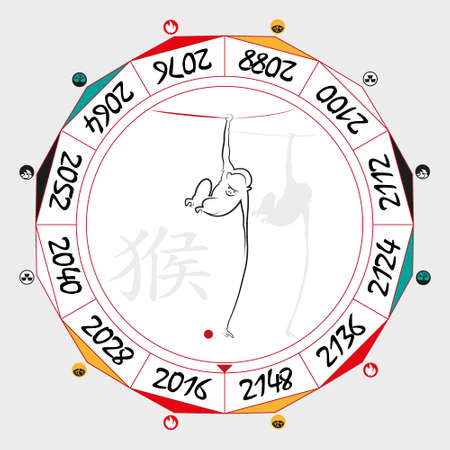Ancient Roots: Wind Chimes in Chinese Feng Shui
The story of Feng Shui wind chimes begins deep within the heart of ancient China, a civilisation renowned for its intricate philosophies and harmonious approach to life. Rooted in Taoist beliefs, the use of wind chimes—known as “feng ling” (風鈴)—emerged as a means to balance the invisible energies, or “qi”, that flowed through homes and gardens. In traditional Chinese Feng Shui, every element is imbued with symbolism; wind chimes were not mere decorative objects but acted as powerful conduits for redirecting energy and inviting auspicious fortune.
Historically, wind chimes were crafted from bamboo, bronze, or ceramics, each material carefully chosen for its unique resonance and spiritual associations. The gentle ringing tones produced by the chimes were believed to disperse negative qi, clear stagnant spaces, and attract positive influences. Their placement was never arbitrary—masters of Feng Shui considered orientation, material, and even the number of rods essential factors in harnessing beneficial energy flows.
Beyond their practical applications, wind chimes held rich symbolic meanings within Chinese culture. The sound was thought to summon protective spirits and ward off misfortune, while the movement of the chimes represented adaptability and harmony with nature’s rhythms. From imperial courtyards to humble village dwellings, these elegant instruments became enduring icons of peace and prosperity. As we explore their journey across continents and centuries, it becomes clear that Feng Shui wind chimes are more than mere ornaments—they are bearers of ancient wisdom, shaping space and spirit alike.
2. Symbolism and Spiritual Resonance
Feng Shui wind chimes, rooted in ancient Chinese tradition, are far more than decorative objects; they encapsulate a rich tapestry of symbolism, spiritual meaning, and artisanal craft. Their enduring presence across centuries—and now continents—derives from the profound qualities attributed to their form and function. In classical Chinese thought, the interplay of sound, material, and placement is believed to influence the energy or Qi of a space, shaping both atmosphere and well-being. As these chimes have journeyed westwards to Britain, they have retained their core symbolic essence while absorbing local interpretations and aesthetic sensibilities.
The Spiritual Dimension
At the heart of Feng Shui wind chimes lies their spiritual resonance. Traditionally, the gentle tinkling sounds are said to ward off negative energies, attract prosperity, and create harmony between people and their environment. This belief system aligns closely with British ideals of cultivating peaceful domestic spaces—a convergence that has aided the integration of wind chimes into British gardens and homes. The soothing tones echo through courtyards and patios, offering moments of mindfulness amid daily bustle.
Artistic Expression Through Material
The materials chosen for wind chimes carry distinct symbolic meanings that bridge Eastern philosophies with Western appreciation for craftsmanship. Below is a comparison table outlining traditional Chinese associations alongside modern British preferences:
| Material | Chinese Symbolism | British Adaptation |
|---|---|---|
| Bamboo | Harmony with nature; growth | Sustainability; rustic charm in cottage gardens |
| Metal (Brass/Bronze) | Protection; clarity; wealth | Elegance; durability; fits Victorian and contemporary exteriors |
| Ceramic/Porcelain | Purity; refinement; peace | Artisanal appeal; complements English pottery traditions |
| Glass | Transparency; transformation | Aesthetic brilliance; plays with British sunlight in conservatories |
Cultural Motifs That Transcend Borders
The artistry of Feng Shui wind chimes often features motifs such as dragons, coins, or auspicious knots—each bearing layers of meaning. As these designs traverse cultures, they are reimagined through a British lens: dragons become stylised garden guardians, coins morph into tokens of good luck at entryways, and knot patterns blend with Celtic interlace work. This cross-cultural dialogue enriches both traditions, making wind chimes an enduring motif that unites old worlds with new sensibilities.
An Enduring Motif for Contemporary Britain
Ultimately, Feng Shui wind chimes stand as more than simple adornments—they are subtle guides within our spaces, gently shifting energy while celebrating beauty and intention. Their evolution from ancient China to modern Britain is testament to their universal appeal: harmonising interiors and gardens alike through sound, symbolism, and artistry that speaks across time and place.

3. Transmission to the West: Early Encounters and Adaptation
The journey of Feng Shui wind chimes from ancient China to Britain is a fascinating tale of cultural exchange and reinterpretation. The initial encounters can be traced back to the age of exploration and colonial expansion, when British merchants, diplomats, and scholars ventured eastward in search of trade and knowledge. Among the many artefacts brought back from China were delicate wind chimes, admired for both their craftsmanship and their mystical connotations. These early imports found their way into stately homes and botanical gardens across Britain, where they were first appreciated more as exotic curiosities than spiritual tools.
As interest in Eastern philosophies grew during the Victorian era, the symbolism behind Feng Shui wind chimes began to capture the British imagination. Intellectual circles and design enthusiasts explored the principles of energy flow and harmony with nature, drawing parallels between Feng Shui concepts and native traditions such as geomancy and landscape gardening. This period saw the adaptation of wind chimes into British outdoor spaces—not only as decorative elements but also as subtle instruments believed to invite tranquillity and good fortune.
By the twentieth century, with the rise of globalisation and multiculturalism, Feng Shui wind chimes became increasingly mainstream within British homes. Their aesthetic appeal was harmoniously blended with local design sensibilities, often using materials like English oak or copper to create a uniquely British interpretation. Today, these wind chimes are not merely reminders of distant lands but have become an integral part of Britains architectural and cultural tapestry, embodying a spirit of openness to new ideas while honouring centuries-old traditions.
4. Embracing Feng Shui in Modern British Homes
As the global fascination with holistic living and Eastern philosophies continues to grow, Britain has warmly welcomed the ancient art of Feng Shui into its contemporary domestic landscape. The integration of Feng Shui wind chimes into British homes represents a beautiful fusion between traditional Chinese wisdom and the unique aesthetics of British interiors and gardens.
The principles of Feng Shui, which focus on harmonising energy flow within a space, resonate with many British homeowners seeking serenity and balance in their living environments. Wind chimes, once an exclusively Asian adornment, have found new expression in the UK’s diverse architectural settings—from charming Victorian terraces to modern urban flats and picturesque countryside cottages.
The Fusion of Feng Shui Principles and British Design
British design sensibilities, known for their understated elegance and connection to nature, provide a perfect canvas for the subtle addition of Feng Shui elements. Rather than overwhelming spaces, wind chimes are thoughtfully placed to complement existing décor—often hung near garden doors, conservatories, or shaded verandas where gentle breezes can bring their melodic tones to life.
Contemporary Appreciation Across the UK
In recent years, wind chimes have grown from a niche decorative item into a beloved feature across the UK. Their popularity is not solely due to their visual or auditory appeal; many Britons now appreciate their ability to symbolise good fortune, ward off negative energy, and create tranquil atmospheres both indoors and out.
Blending Styles: Common Features of British Feng Shui Wind Chimes
| Element | Traditional Feng Shui | Modern British Adaptation |
|---|---|---|
| Materials | Bamboo, bronze, jade | Glass, recycled metals, English oak |
| Placement | Main entrances, windows | Garden patios, kitchen doorways, conservatories |
| Purpose | Energy flow, protection | Calm ambience, aesthetic harmony |
| Design Motifs | Dragons, coins, lotus flowers | Bespoke patterns, floral engravings, minimalist forms |
This seamless blend has made Feng Shui wind chimes not just symbols of cultural exchange but also cherished fixtures that reflect the evolving tastes and values of modern Britain—where heritage meets innovation in every breeze that stirs them.
5. Sonic Design: Integrating Wind Chimes in British Public and Private Spaces
The journey of Feng Shui wind chimes from ancient China to modern Britain is not only a story of cultural migration but also one of creative reinvention. Today, British designers, architects, and homeowners have embraced wind chimes as both visual and sonic elements that enhance the ambience of various spaces. In lush gardens across the UK, wind chimes are thoughtfully positioned among flowering borders or suspended from sturdy oak branches, their gentle tones mingling with birdsong and the rustle of leaves. Here, the focus is on creating a multi-sensory experience that feels uniquely British yet resonates with the age-old principles of harmony.
On terraces and patios, wind chimes are often selected for their materiality—be it polished copper, weathered wood, or contemporary glass—each choice reflecting a different facet of British design sensibility. The interplay between form and sound becomes an extension of the outdoor living space, offering a subtle soundtrack to morning tea or evening gatherings with friends. In these settings, wind chimes serve not just as decorative accents but as tools for cultivating tranquillity and mindful presence.
Courtyards in urban environments present another canvas for sonic design. Here, architects incorporate wind chimes to soften the city’s edges, introducing moments of calm amidst the bustle. Whether hanging from pergolas or nestled within vertical gardens, their melodies provide a gentle reminder of nature’s presence even in metropolitan surroundings. This thoughtful placement reflects a growing appreciation for biophilic design—a movement that seeks to reconnect people with the natural world through architecture and landscape.
Within interiors, the integration of wind chimes takes on a more intimate dimension. Homeowners might suspend delicate chimes near windows where they catch the breeze or position them in hallways as subtle markers of transition between rooms. The soft resonance within these private realms echoes the British penchant for understated elegance and thoughtful detail. Each chime becomes part of a curated environment where sound shapes mood and movement through space.
Across Britain, whether in grand estates or cosy flats, the evolving use of Feng Shui wind chimes illustrates a harmonious fusion of East and West. The careful weaving of these objects into public and private spaces speaks to a shared desire for balance, beauty, and sensory richness—a testament to how ancient traditions continue to inspire contemporary British living.
6. Cultural Harmony: A Bridge Between Traditions
As we reflect on the journey of Feng Shui wind chimes from ancient China to modern Britain, it becomes clear that these delicate objects have become much more than mere decorative elements. They now serve as powerful symbols of cross-cultural understanding and creative dialogue. The British embrace of wind chimes demonstrates an openness to global influences, a willingness to blend Eastern philosophies with Western sensibilities.
The Dialogue Between East and West
The evolution of wind chimes in Britain highlights an ongoing conversation between Chinese origins and British creativity. While the original purpose was deeply rooted in spiritual protection and environmental harmony, contemporary British interpretations often focus on aesthetic appeal, acoustic pleasure, and mindful design. This fusion has resulted in unique forms that echo both traditions, bridging the gap between ancient wisdom and modern artistry.
Wind Chimes as a Cultural Connector
In gardens across the UK, wind chimes are now cherished for their gentle melodies and calming presence. They invite moments of pause and reflection, encouraging us to consider the rich tapestry of influences that shape our living spaces. By welcoming Feng Shui principles into British homes and gardens, designers and homeowners alike celebrate diversity and cultivate a sense of cultural harmony.
A Symbol of Shared Values
The enduring appeal of wind chimes lies in their ability to transcend borders. They remind us that beauty, tranquillity, and balance are universal aspirations—values cherished by both Chinese tradition and British culture. As these elegant ornaments continue to evolve, they stand as a testament to the creative potential unlocked when different worlds meet, inspiring us to embrace new perspectives while honouring the wisdom of the past.


